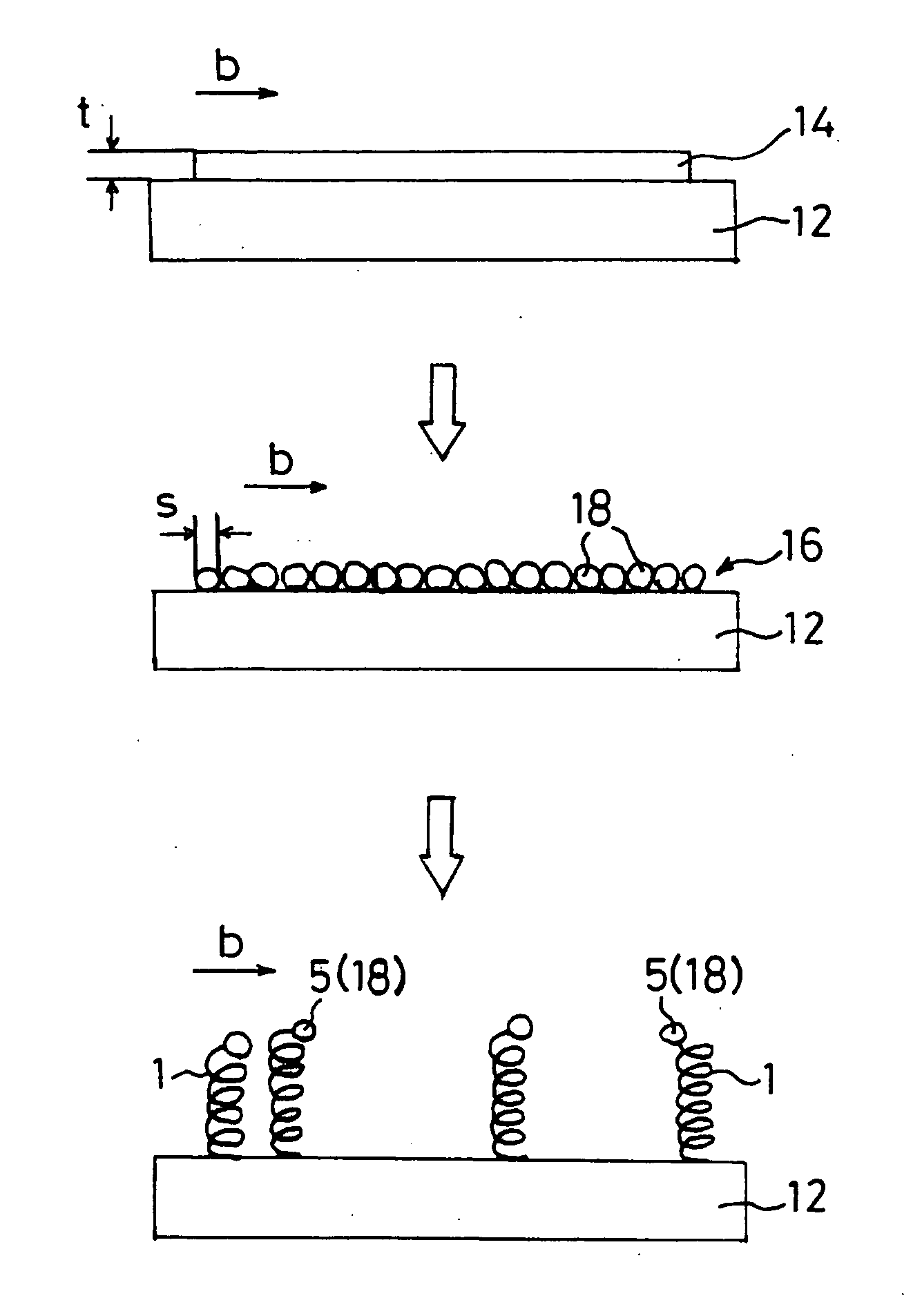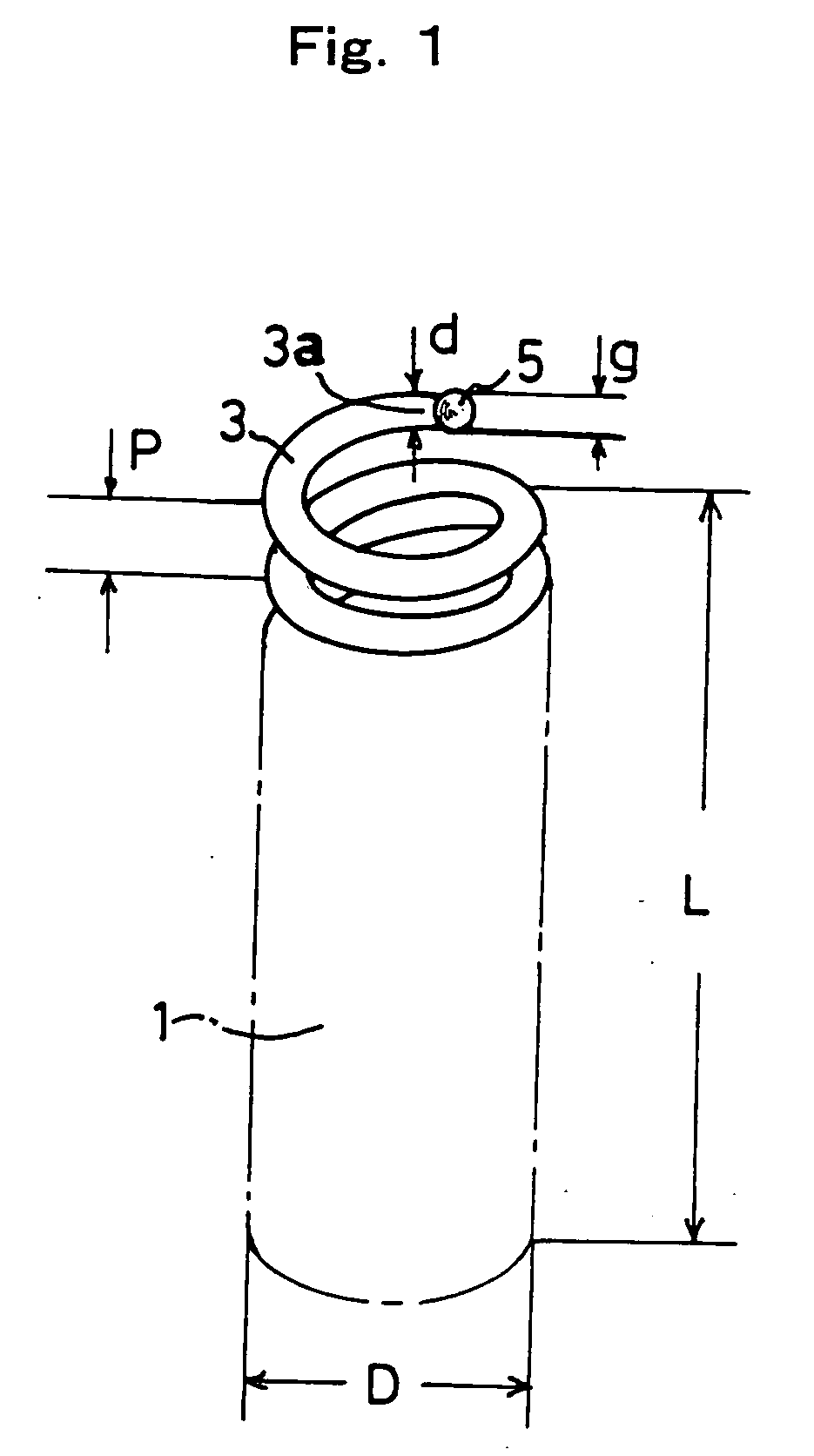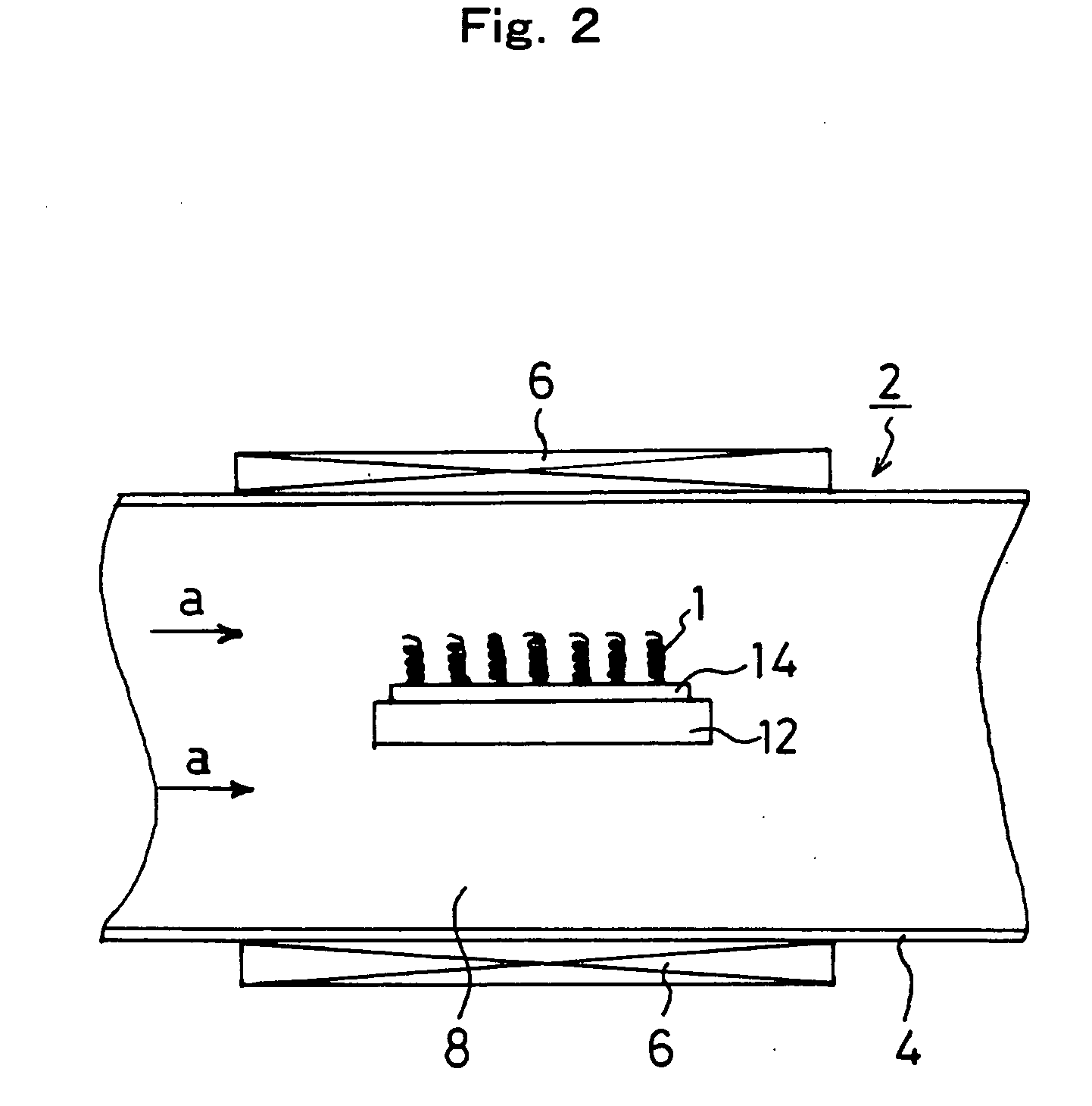Catalyst for synthesizing carbon nanocoils, synthesizing method of the same, synthesizing method of carbon nanocoils, and carbon nanocoils
a carbon nanocoil and catalyst technology, applied in the field of catalysts, can solve the problem of unclear micro-mechanics of this
- Summary
- Abstract
- Description
- Claims
- Application Information
AI Technical Summary
Benefits of technology
Problems solved by technology
Method used
Image
Examples
example 1
Synthesis of Carbon Nanocoils from Fe•In•Sn Oxide Thin Film
[0178] An Fe•In•Sn oxide thin film having a film thickness of 200 nm was formed on the (001) surface of an Si substrate. Carbon nanocoils were synthesized at approximately 700° C. with this oxide thin film as a starting catalyst by means of the carbon nanocoil synthesizing apparatus shown in FIG. 2. 60 sccm of a C2H2 gas was utilized as a carbon compound gas, which is a material gas, and 200 sccm of a He gas was used as a carrier gas.
[0179] The substrate was taken out 1 second, 5 seconds, 10 seconds, 1 minute, 5 minutes and 30 minutes after the gases were made to flow, and the state on the surface of the substrate was observed through a scanning electron microscope (SEM). The change in the Fe•In•Sn oxide thin film and the degree of growth of carbon nanocoils was confirmed from the respective states on the surface of the substrate.
[0180]FIG. 11 is a SEM image of the Fe•In•Sn oxide thin film, taken at a magnification of 50,...
example 2
Formation of Carbide Catalyst Fine Particles from 1 sccm of C2H2
[0185] In Example 1, the C2H2 gas, which is a material gas, was supplied at 60 sccm, and therefore, the growth rate of the carbide catalyst fine particles was too great. Therefore, it was examined how the first intensity peak of the diffraction intensity of Fe3InC0.5 increases as time elapses when the C2H2 gas was supplied at 1 sccm.
[0186] The C2H2 gas was set at 1 sccm, He was set at 50 sccm, and the heating temperature was set at 700° C. A substrate on which an Fe•In•Sn oxide thin film that is exactly the same as that of FIG. 12 was placed in the reaction chamber. This substrate kept being irradiated with X-rays, and a diffraction intensity of 2θ=39.62° (in the vicinity of approximately 40°) was measured where the first peak was obtained, as time elapsed.
[0187]FIG. 13 is a graph showing the first intensity peak of the diffraction intensity where 2θ is 39.62° (in the vicinity of approximately 40°) as time elapsed. T...
example 3
Control of Diameter of Catalyst Fine Particles of Fe3InC0.5
[0189] Growth conditions may be changed in order to control the particle diameter (diameter s) of the catalyst fine particles of Fe3InC0.5. In this Example 3, the growing temperature, that is, the heating temperature of the substrate (temperature of the reaction chamber), was changed between 650° C. and 700° C. when the carbide catalyst fine particles were formed, and carbon nanocoils were grown using these carbide catalyst fine particles.
[0190] The C2H2 gas was set at 1 sccm, He was set at 50 sccm, and the heating temperature was set at 650° C. and 700° C. In exactly the same manner as in FIG. 12, a substrate was placed in a reaction chamber with an Fe•In•Sn oxide thin film as a starting catalyst. Catalyst fine particles of Fe3InC0.5 were grown on this substrate, and carbon nanocoils were grown using this substrate.
[0191]FIG. 14 is a scanning electron microscope image of the carbide catalyst fine particles and grown carb...
PUM
| Property | Measurement | Unit |
|---|---|---|
| outer diameter | aaaaa | aaaaa |
| diameter | aaaaa | aaaaa |
| diffraction angle | aaaaa | aaaaa |
Abstract
Description
Claims
Application Information
 Login to View More
Login to View More - R&D
- Intellectual Property
- Life Sciences
- Materials
- Tech Scout
- Unparalleled Data Quality
- Higher Quality Content
- 60% Fewer Hallucinations
Browse by: Latest US Patents, China's latest patents, Technical Efficacy Thesaurus, Application Domain, Technology Topic, Popular Technical Reports.
© 2025 PatSnap. All rights reserved.Legal|Privacy policy|Modern Slavery Act Transparency Statement|Sitemap|About US| Contact US: help@patsnap.com



